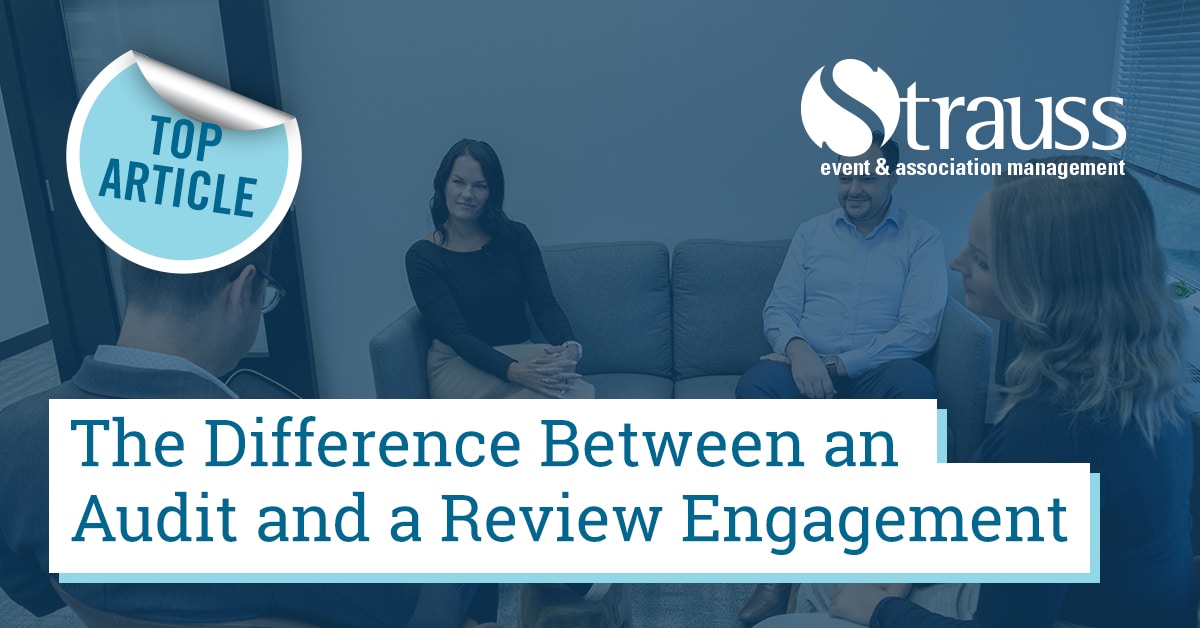Audits and Review Engagements are the typical year-end services offered by professional accountants to association and not-for-profit clients.
For an association, the by-laws may dictate which type of service is required. If they do not, the type of service you require will depend on the degree of assurance you need to ensure that the financial statements are free of material misstatements. The type of engagement you need could also depend on bookkeeping services required or various other factors affecting your association. Association incorporated under the Canada Not-for-profit Corporations Act (CNCA) must follow the specifics of the Act and details on this can be found in a previous article on that topic.
An Audit
The objective of an audit engagement is to enable the independent professional public accountant to issue an opinion on the fairness of the client’s financial statements. An audit provides “reasonable assurance” that the financial statements are free of material misstatement and are in accordance with Canadian accounting standards for not-for-profit organizations. The term “reasonable” is necessary because absolute assurance is not possible. It acknowledges that limitations exist in all systems of internal control, and that uncertainties and risks may exist, which no one can confidently predict with precision.
Auditors use a variety of methods to determine if the financial statements are free of material misstatement, including study and evaluation of internal controls, inspection of documents, physical counts of assets, making enquiries inside and outside the company, and other procedures that support the Canadian generally accepted auditing standards for not-for-profit organizations.
The Canadian accounting standards for not-for-profit organizations refer to a section (Part III) of the CPA Canada Handbook which outlines all current accounting standards and rules in Canada on accounting and assurance.
Canadian generally accepted auditing standards for not-for-profit organizations are standards against which the quality of audits are performed and may be judged.
A Review Engagement
While an audit is meant to give some assurance that the financial statements are free of material misstatements, a review engagement is only meant to ascertain whether or not the financial statements are believable or plausible.
A review provides limited assurance that the financial statements conform to generally accepted accounting principles. This is negative assurance. This means that as the professional accountant is only providing assurance that nothing has come to their attention that would indicate the financial information is not presented in accordance with Canadian accounting standards for not-for-profit organizations. An audit, on the other hand enables a positive assurance allowing the accountant to state in their auditor’s report that the financial statements are in accordance with Canadian accounting standards for not-for-profit organizations.
What is a Notice to Reader/Compilation?
A notice to reader or compilation is simply a compiling of information into financial statements, based on information provided by their client. No assurance is provided. Therefore a compilation is only appropriate where users do not need assurance that the financial information conforms in all respects to Canadian accounting standards for not-for-profit organizations.
What is Materiality?
Materiality is defined as “Information said to be material if omitting it or misstating it could influence decisions that users make on the basis of an entity’s financial statements”.
The concept of materiality is applied by the auditor both in planning and performing the audit. It is also used in evaluating the effect of identified misstatements on the audit and of uncorrected misstatements, if any, on the financial statements and in forming the opinion in the auditor’s report.
Materiality is calculated in a variety of ways. It depends on what’s best for your association based on the auditor’s judgement and professional skepticism.
Some examples of calculations used to determine if information is material or not include if it would fall within one of the following ranges:
- 5% of pre-tax income;
- 0.5% of total assets;
- 1% of equity;
- 0.5% of total revenue
If you are still unsure about what type of engagement the association requires, contact a Chartered Professional Accountant. They will be able to help you and determine your organization’s needs.

